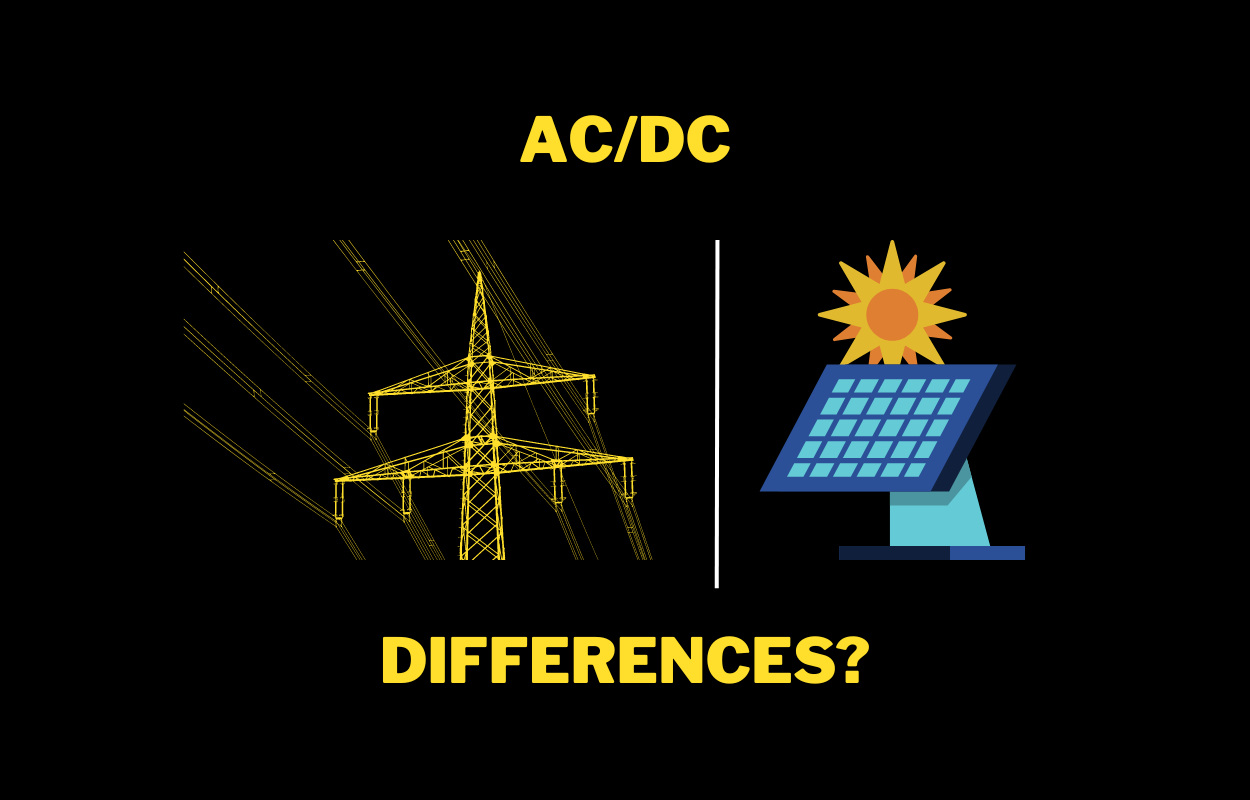AC and DC are two types of electrical current, with the main difference being the direction of electron flow. In DC, electrons flow in one direction, while in AC, electrons switch directions periodically. AC is commonly used in homes and buildings and for long-distance power transmission, while DC is used in batteries and electronic devices. Let’s see more possible differences in the next sections.
Table of Contents
What is Alternating Current (AC)?
Alternating current (AC) is a type of electrical current that periodically changes direction, as opposed to direct current (DC) which flows in only one direction.
The direction of AC changes with time, typically at a frequency of 50 or 60 times per second (50 or 60 Hz) in most countries. This is the type of current that is used in most homes and buildings, as well as in the power grid for long-distance transmission.
The voltage and current of AC change periodically in a sine or cosine waveform, and it can be easily transformed to a higher or lower voltage using a transformer, which makes it more suitable for long-distance transmission and distribution of electricity.
What is Direct Current (DC)?
Direct current (DC) is a type of electrical current that flows in one direction and the voltage and current remain constant over time.
This type of current is the kind that is generated by batteries, solar panels, and fuel cells, and used in electronic devices such as smartphones, computers, and other electronic gadgets. DC power is also used in certain industrial processes and for charging electric vehicles.
DC power is typically generated by sources such as solar panels or batteries and it does not require a transformer to change its voltage level.
DC transmission is less efficient over long distances and has higher losses in comparison to AC transmission.
Difference between AC and DC
Here is a comparison table of AC and DC:
| AC (Alternating Current) | DC (Direct Current) |
|---|---|
| Changes direction periodically | Flows in one direction |
| Typically at a frequency of 50 or 60 times per second | No frequency or zero frequency |
| Used in most homes and buildings | Used in batteries and electronic devices |
| Can be easily transformed to a higher or lower voltage | Difficult to transform voltage |
| Used in the power grid for long-distance transmission | Used in local power supply |
| Can be generated by power plants | Can be generated by solar panels or batteries |
| Can be transmitted over long distances with fewer losses | Less efficient over long distances |
| Can be used in motors and generators | Can be used in electronic devices |
| A transformer is used to step up or step down AC | A buck/ Boost / Buck-boost converter is used to step up or down DC |
| AC power transmission losses are generally lower than DC transmission | DC transmission has higher losses |
Thanks for reading this article.
FAQ related to the Difference between AC and DC
What is the frequency of AC?
The typical frequency of AC is 50 or 60 times per second (50 or 60 Hz) in most countries.
Where is AC used?
AC is used in most homes and buildings, as well as in the power grid for long-distance transmission.
What is the waveform of AC voltage and current?
The waveform of AC voltage and current is a sine or cosine wave.
Can the voltage of AC be transformed?
Yes, the voltage of AC can be easily transformed to a higher or lower voltage using a transformer.
What are the advantages of AC over DC?
AC can be easily transformed to a higher or lower voltage, making it more suitable for long-distance transmission and distribution of electricity. AC power transmission losses are also generally lower than DC transmission for long-distance transmission.
What is the direction of DC?
DC flows in only one direction.
Where is DC used?
DC is used in batteries and electronic devices such as smartphones and computers.
What is the waveform of DC voltage and current?
The waveform of DC voltage and current is constant and does not change over time.
Can the voltage of DC be transformed?
It is much more difficult to transform the voltage of DC than it is for AC.
What are the advantages of DC over AC?
DC does not require a transformer to change its voltage level and it is typically generated by sources such as solar panels or batteries. It is also used in certain industrial processes and for charging electric vehicles.
